Gyroporus castaneus is a delicious, albeit small, edible mushroom related to porcini. If you're a mushroom hunter they're worth getting to know.
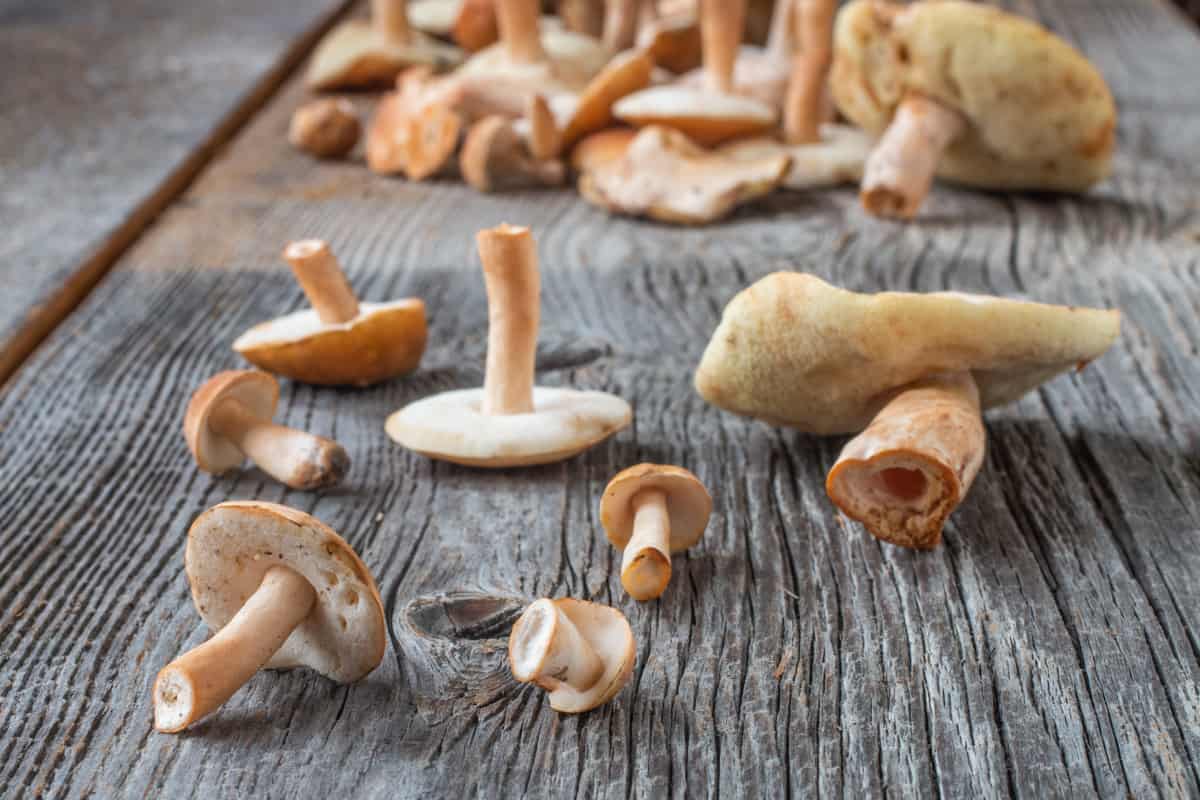
That is a very small bolete, is what I thought the first few times I ran into Gyroporus castaneus, also known as the chestnut bolete. Most of the time when I find them they're itt-bitty, teeny-tiny, and scattered. So scattered in fact, that it's easy to just pay them no mind, I mean, I love identifying mushrooms, but I'm picking them to eat, and if there isn't a decent fruiting to warrant bringing them home, I'll probably pass, no matter what it is.

If it wasn't for the glowing review of the taste from a number of different authors in the field and some of my older hunting pals, I probably wouldn't have ever paid them any mind, and that would've been a mistake.
Habitat
These are common in mixed hardwood forests of Eastern North America in the summer when the boletes are out (they're absent to very rare in Western North America). I see them often sprinkled throughout woods with red and white oak trees where I look for porcini. G. castaneus occasionally grows in small groups, but more often than not, I see them alone and scattered across the woods similar to other boletus mushrooms.
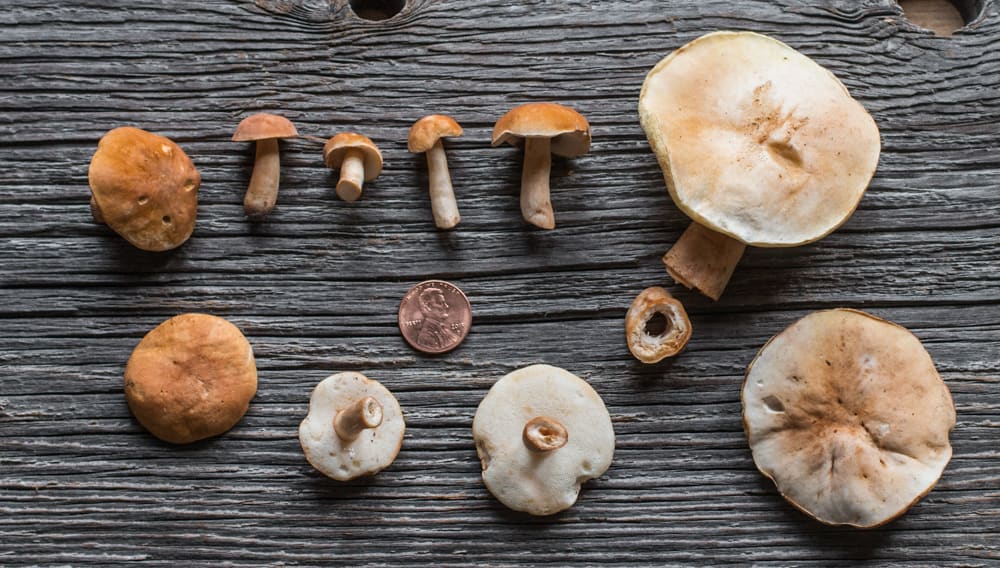
For years, the process of picking them for me went like this: pick one Gyroporus, pick another Gyroporus, then completely forget about them until I get home, unload the haul, and notice the little chestnut boletes have been completely crushed under the weight of chanterelles.
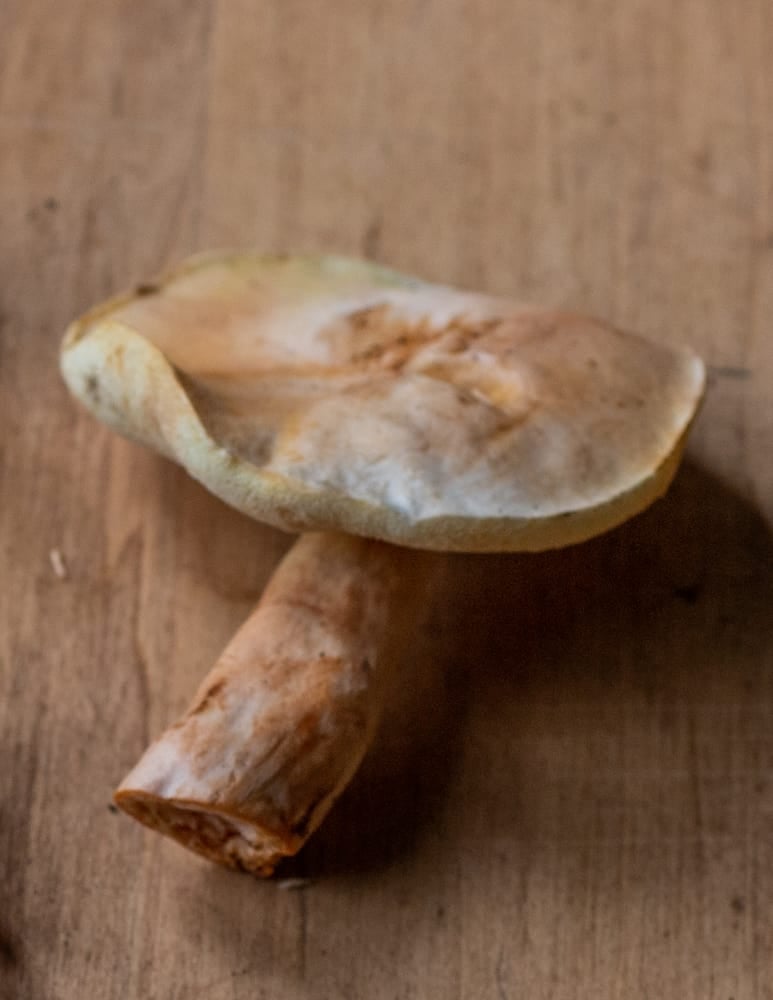
Oh well, I didn't find too many anyway, I'd think. I honestly meant to eat and enjoy the chestnut boletes every time I picked them, but a golden pile of chanterelles has a mesmerizing quality.
As I was talking with another mushroom forager I know earlier this week discussing fruiting patterns of Lactifluus, we touched on how odd mushroom fruiting patterns can be. Some years you might get a wonderful harvest, the next year, not a single one, even if the mushroom gods give rain.
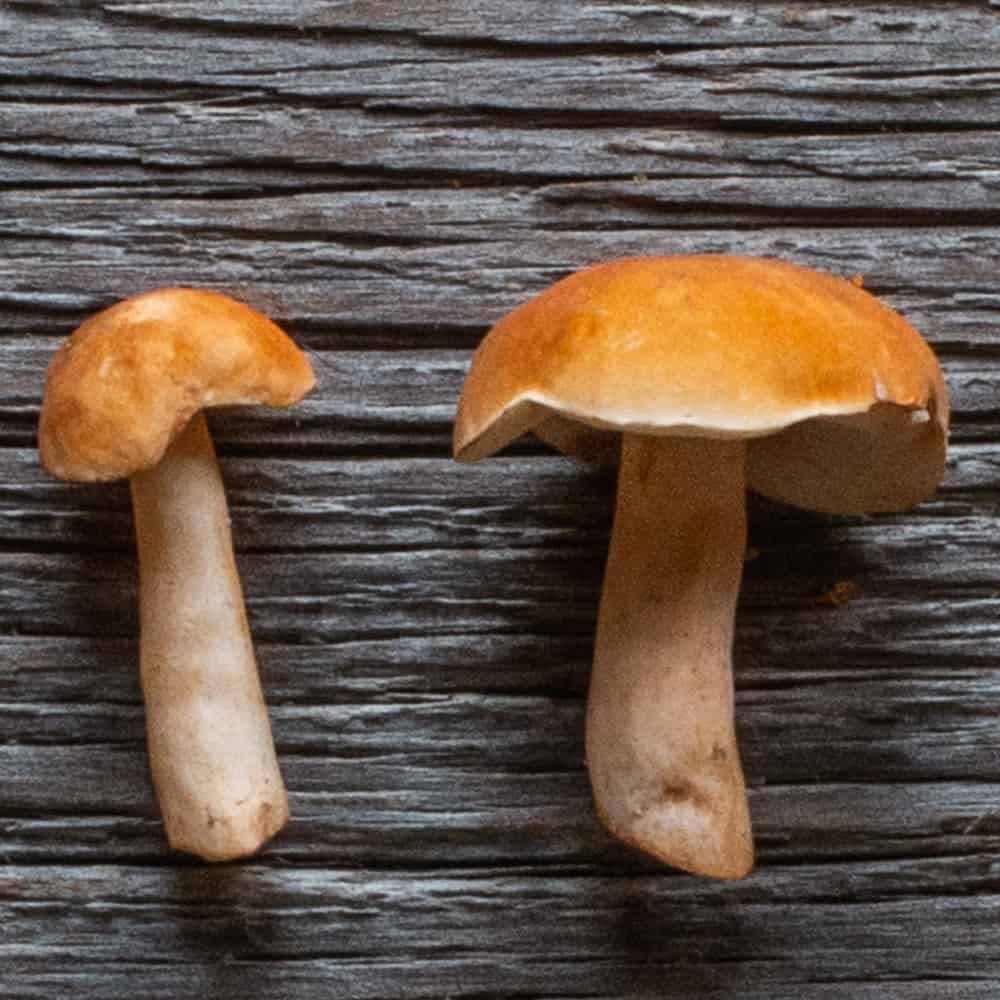
Well this year, it was a good for Gyroporus, and I came upon more of them than ever before, enough to enjoy, and a lot of them were as big as large chanterelles.
After the multiple hunts over the years where I just chucked them into the bag with everything else, this year I was ready. I've been making sure to keep some small brown sandwich bags in my mushroom pack, useful for keeping mushrooms separate, or making sure some things don't stain the others (black trumpet mushrooms).
I got about 2 pounds of the little guys: plenty to document some of the variation they show as they grow, and have a couple meals.
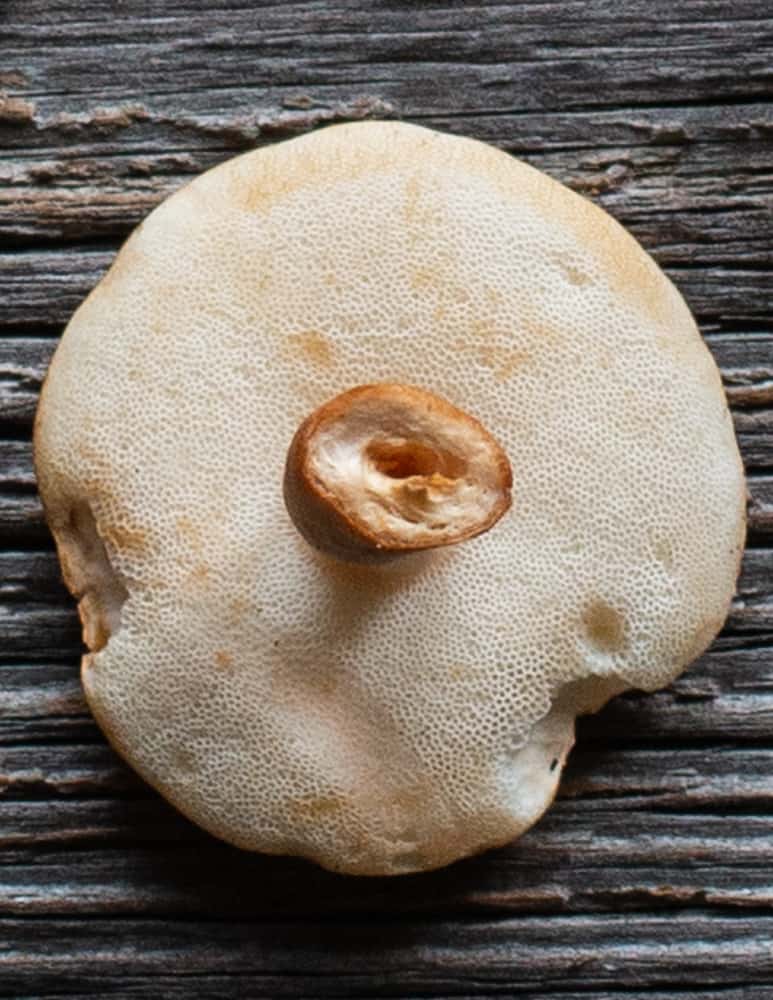
Chestnut Bolete Identification
ID tips
- A hollow, thin walled stem, which may not be hollow until they're mature.
- A rich, chestnut brown cap when young, that gradually turns to tawny, or beige.
- The spore print is pale yellow.
- Typically growing near oak trees.
- Very tight, brilliant white pores when young, opening up only slightly as they age.
- Compared to other boletes I eat, these have a very small stature, they're short and stout, and I've never seen them more than about 2-3 inches in diameter of the cap, at the very largest. See the picture above with a penny for scale.
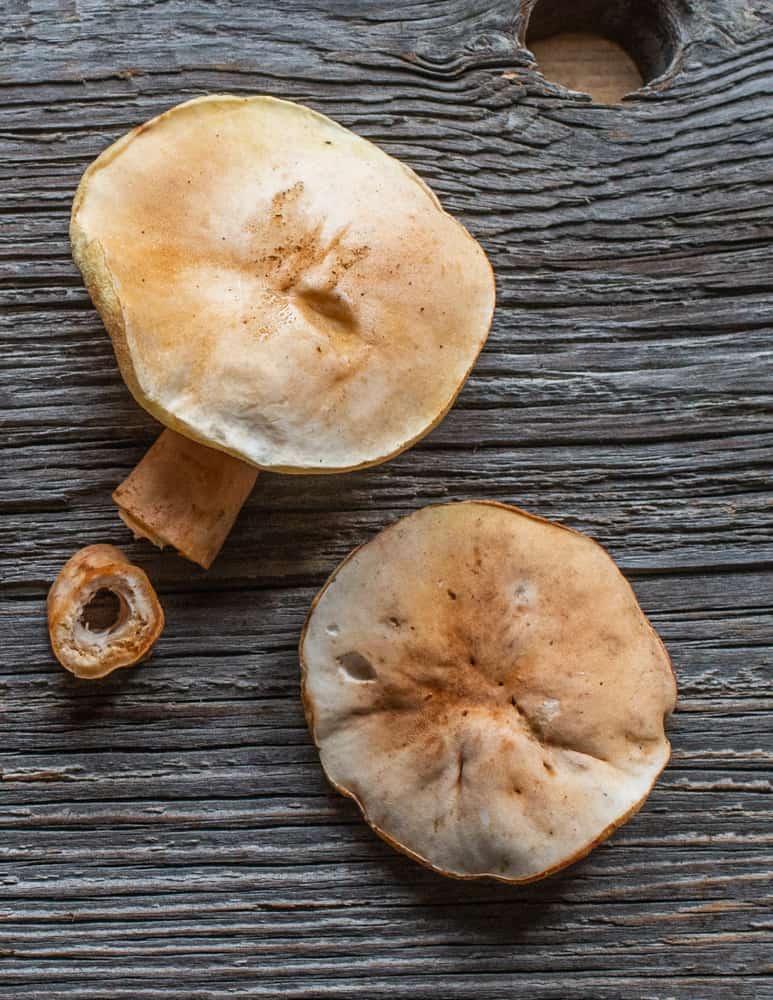
General Cleaning and Cooking
These are usually very clean, aside from a brush or two and a once over for bugs, I have never found I have to clean them too much.
Cooking is fun, but needs a delicate touch. As with Leccinum species, the stem has a different texture and cooking time compared to the cap, so I like separate the two, then cook both the caps and stems whole. Trying to slice these will likely result in overcooking, or them getting lost in whatever you make, much better to leave them in pieces as large as possible to get that bolete "pop" when you bite into a large piece of them.
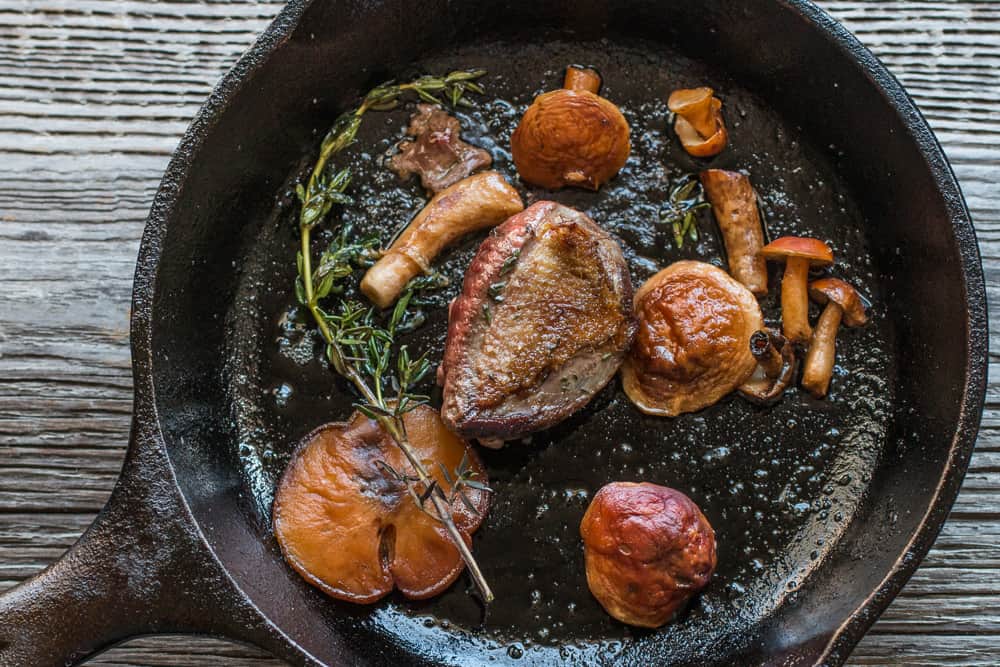
When you're dreaming up how to showcase your Gyroporus, keep it simple, and if you want to taste them, make sure to cook them alone. Simply sauteed and spooned on top of a piece of meat or fish is wonderful, especially with a touch of shallots, garlic or parsley tossed in at the end.
The flavor is excellent, nutty, and delicious. As I mention above, you can likely cook these whole, or in large pieces too, as they have a great resistance to bugs, which is pretty rare with many of the boletes you might enjoy.
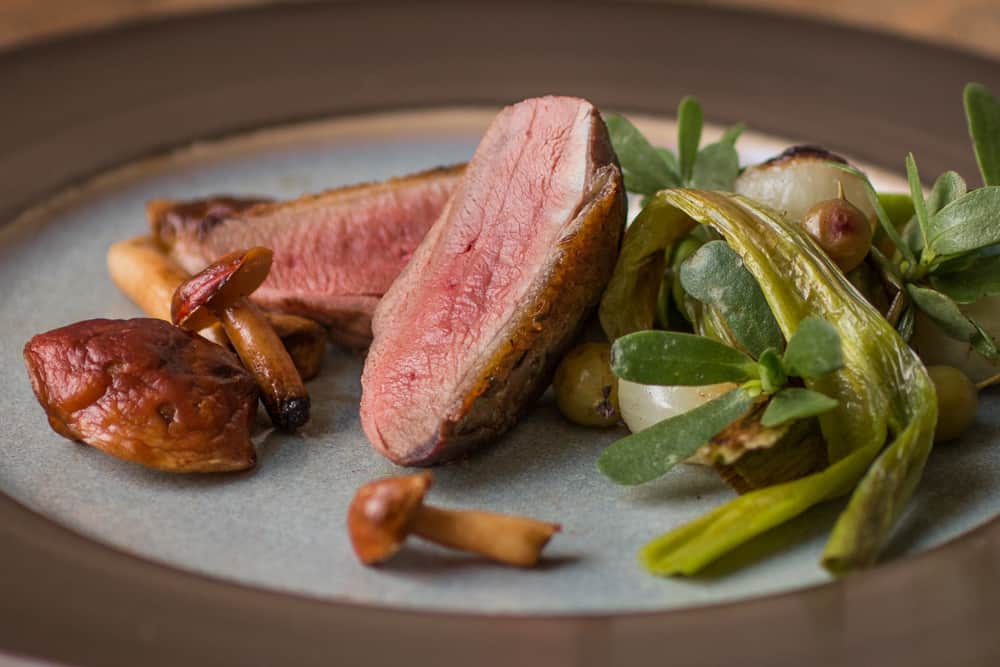

Alan D. Waller
Found a loner chestnut in an unlikely location, nestled beside the back side of my 90’ pole barn on the southern exposure, since I’m a novice I picked it and brought into the kitchen to identify with my iPad, I knew enough to know it was a type of bolete because of the spongey underside, the stem broke off after I picked it, so I went through some push-up to get a decent side view with my iPad camera.
I noticed it was a large one, based on what I had read, and the stem was hollow and therefore I knew it was advanced it it’s maturing stage.
My question is because the stem was hollow and “black” inside, does that mean it’s buggey, and what type of bug do you generally find in them?
Alan Bergo
Hi Alan (Thanks for spelling your name correctly). With Gyroporus, the stems may be damaged, but often the caps are still very good, keep cutting up the stem until it cuts clean. The bugs typically found in them are the larvae of fungal knats, which will look like small larvae or tiny white worms. Sometimes they'll have left and all you'll see is excrement.
Will K.
I usually collect and dry them as I find them, then add them to a big jar of "other" boletes (ones I don't usually find enough of for a stand-alone meal or side dish). In my jar from last year, I know there are dried B. seperans, B. innixus, B. auripes, and B. bicolor in addition to the Gyroporus castaneus (may be one or two others in there, as well).
Nathan Perrier
I also find these on occasions when hunting chanterelles. There are so many species of boletus that I don't bother unless I fine a bug-free King (which is tough for me). I might have to give these a try after making a certain ID.
Pete Hautman
I never seem to find enough at one time to make a meal, but I pick and dry them throughout the season, and by October I usually have a jarful. A very nice mushroom. The even smaller gyroprous (G. purpurinus??) are good too, and the larger G. cyanecens are fantastic and fun to cook with cuz they change color from blue to yellow in the pan. Looking forward to your books!
Donna Hartmann
Alan, I foraged the chestnut bolete for the first time last year, in mid-September. This is a very pretty bolete, petite and tasty! I’m watching the spot near a woodpile n my back woods this year, hoping for more. Thanks for highlighting them. Happy foraging!